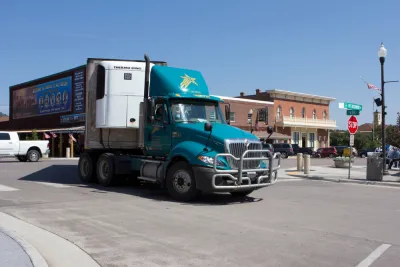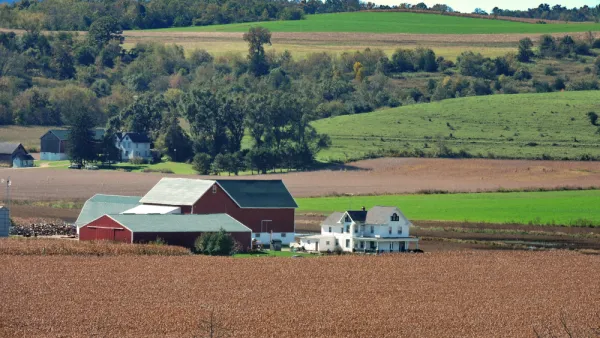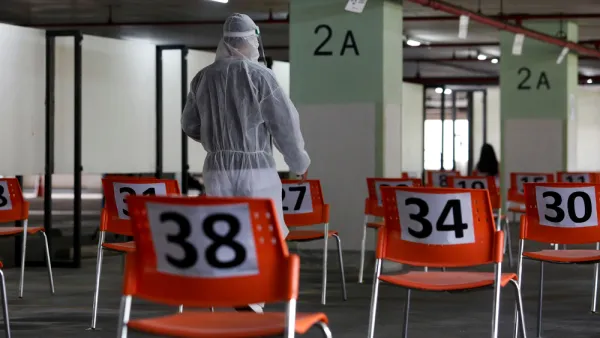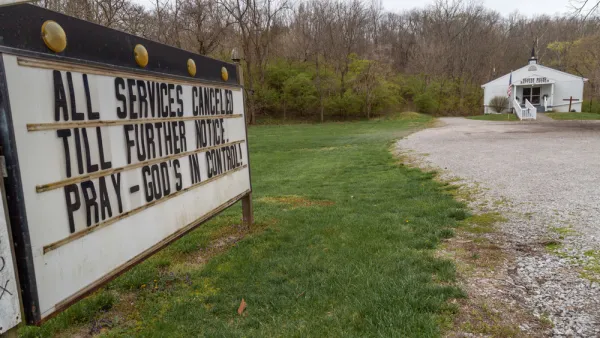As President Donald Trump eyes May 1 for "opening up states," he might want to look at states that never shut down businesses to understand his public health advisor's warning that "the virus makes the timeline."

South Dakota, one of the nation's least populated states with "lots of room," a reference to President Trump's characterization of some states that "might be able to get back to work more quickly than other places" (as Washington Post correspondent Phillip Bump wrote in his analysis, "The myth of rural America’s protection from the coronavirus"), offers an illustration of a recent warning made by Anthony Fauci, the director of the National Institute of Allergy and Infectious Diseases.
In response to a question by CNN's Chris Cuomo last month “about varying projections from different states and jurisdictions for how long social distancing measures and shutdowns will stay in place," Fauci, one of two public health experts on the White House Coronavirus Task Force, responded, “the virus makes the timeline," according to an account by The Hill.
South Dakota is also one of the eight, largely rural states headed by Republican governors that have resisted issuing stay-at-home orders to reduce community spread of COVID-19.
"But now South Dakota is home to one of the largest single coronavirus clusters anywhere in the United States, with more than 300 workers at a giant pork-processing plant falling ill," reported "With the case numbers continuing to spike, the company was forced to announce the indefinite closure of the facility Sunday, threatening the U.S. food supply."
Two days later, Lisa Kaczke of the Argus Leader reports that the facility, the Smithfield Foods pork processing plant in Sioux Falls, the state's largest city, has become the "the largest coronavirus hot spot in the U.S."
The 518 employees and 126 non-employees connected to Smithfield makes it the largest cluster in the country (644), according to tracking by The New York Times. The previous top cluster was 585 cases aboard the USS Theodore Roosevelt in Guam.
South Dakota and New York
As posted recently, the state's Republican governor, Kristi Noem said at a news conference on April 1, "South Dakota is not New York City,” reported Elisa Sand for the Aberdeen News, "adding the state will be able to manage COVID-19 without doing some of the things that larger cities are."
“The calls for a one-size-fits-all solution in South Dakota is herd mentality,” Noem said. “It’s not leadership.”
[Correspondent's note: herd mentality should not be confused with herd immunity, a term often but questionably applied to a novel coronavirus.]
On April 1, South Dakota had 129 cases and two deaths from COVID-19. On April 16, the South Dakota Department of Health reports the caseload at 1,311 and seven deaths.
As for the reference to New York City, clearly Sioux Falls is no New York City, which on April 16 lists 7,563 confirmed deaths and 3,914 probable deaths, but both are cities that, in their own ways, are being upended by the deadly virus. Josh Clayton, the South Dakota state epidemiologist, thanked New York for providing data for his presentation on modeling showing projections on the need for hospital equipment during the governor's daily coronavirus update from Pierre, the state capital, on April 15.
Pointing to a flattening curve showing the need for hospital beds and ventilators based on hospitalization rates, Clayton states [at 13:00 in the video], "I'd really like to thank [New York] for sharing the data that they have to be able to help inform our models," which show success from practicing social distancing mitigation noted by Gov. Noem earlier in her presentation.
On April 16, the Centers for Disease Control and Prevention toured the closed Smithfield plant to assess the possibility of reopening the plant. "Next steps of the plan are contingent on feedback from the CDC’s efforts today," Noem's spokesman Ian Fury told the Argus Leader Thursday morning.
Related in Planetizen:
-
Will the Coronavirus Spare Rural America? April 13, 2020
Hat tip to Rachel Maddow.

National Parks Layoffs Will Cause Communities to Lose Billions
Thousands of essential park workers were laid off this week, just before the busy spring break season.

Retro-silient?: America’s First “Eco-burb,” The Woodlands Turns 50
A master-planned community north of Houston offers lessons on green infrastructure and resilient design, but falls short of its founder’s lofty affordability and walkability goals.

Delivering for America Plan Will Downgrade Mail Service in at Least 49.5 Percent of Zip Codes
Republican and Democrat lawmakers criticize the plan for its disproportionate negative impact on rural communities.

Test News Post 1
This is a summary

Test News Headline 46
Test for the image on the front page.

Balancing Bombs and Butterflies: How the National Guard Protects a Rare Species
The National Guard at Fort Indiantown Gap uses GIS technology and land management strategies to balance military training with conservation efforts, ensuring the survival of the rare eastern regal fritillary butterfly.
Urban Design for Planners 1: Software Tools
This six-course series explores essential urban design concepts using open source software and equips planners with the tools they need to participate fully in the urban design process.
Planning for Universal Design
Learn the tools for implementing Universal Design in planning regulations.
EMC Planning Group, Inc.
Planetizen
Planetizen
Mpact (formerly Rail~Volution)
Great Falls Development Authority, Inc.
HUDs Office of Policy Development and Research
NYU Wagner Graduate School of Public Service





























